Built to dribble and with a desire to take risks — the traits that made Diego Maradona an icon
Scientists, psychologists and former opponents tell what made the soccer forward so effective on the pitch and the personality that plagued him off it.
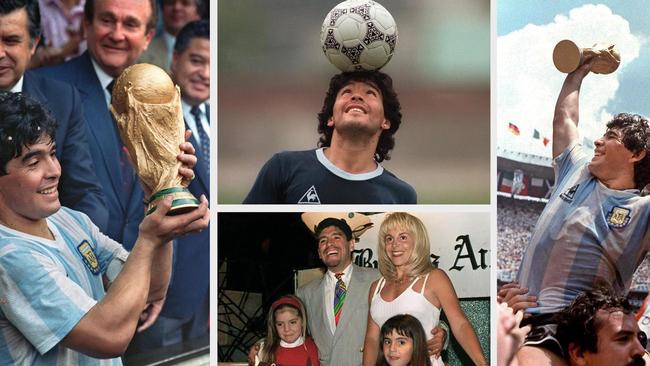
THE ANATOMICAL QUIRKS THAT AIDED MARADONA’S TALENT
Phil Hayward, Director of Performance and Sport Science, LA Galaxy: At 5ft 5in (165cm), Maradona had the ideal build for his style of play. A low centre of gravity combined with an immensely strong core allowed him to change direction rapidly while holding off defenders. Shorter players have a higher frequency stepping pattern that lends itself both to close ball control and directional change. They can manipulate the ball with great regularity without breaking from a normal stride.
I recently worked alongside Javier Valdecantos, an esteemed Argentine fitness coach who trained Maradona in the 1990s. He often referred to Maradona’s incredible lower body strength and explained how he would intentionally dribble with a very low posture, lots of hip and knee flexion, knowing that with his already short stature this made him almost impossible to defend against.

Maradona had other anatomical quirks that aided his brilliance. He had a large range of external rotation of the hips, allowing him to open up his body when cutting inside onto his fabled left foot.
This is nature, but there was also nurture. Maradona’s time playing street football as a boy in Buenos Aires, Argentina, undoubtedly shaped his ability to manipulate the ball. A lot of research into skill acquisition in elite performers suggests playing for hours on end before the age of ten will have literally shaped the motor cortex in Maradona’s brain, allowing him a higher degree of fine motor control in the muscle groups involved in dribbling a ball.

WHAT HIS OPPONENTS SAY
Graeme Souness, former Sampdoria midfielder: He was tiny, but a real power pack, all solid muscle and explosive changes of direction. I must have been six inches taller and a stone heavier, but I remember thinking, ‘how did that just happen, I’ve bounced off him.’
Terry Fenwick, former England defender: He was built like you wouldn’t believe. He was a pitbull and he came back for more all the time. The ball was stuck to that left foot, you couldn’t get it off him. I tried to intimidate him but he was always there, ready for more.
Lothar Matthaus, former West Germany captain: It was always a challenge to stand up to him. The ball always obeyed him, even at the highest speeds, as you might only see with Lionel Messi today. The best thing you could do was not let him get the ball.
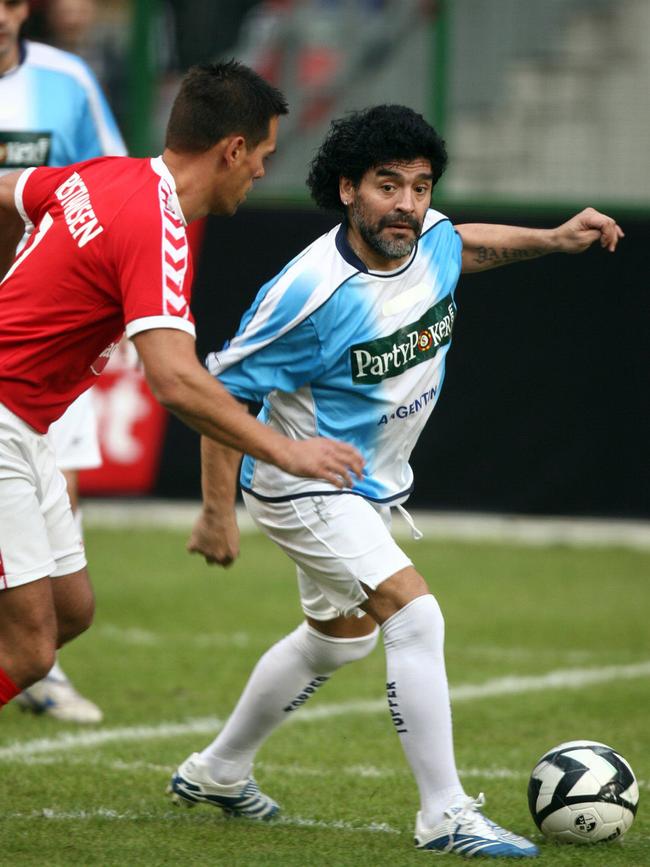
Gary Lineker, former England striker: He was like a magician with the ball. He could do things mere mortals couldn’t do. He had a vision mere mortals didn’t have.
Jurgen Klinsmann, former Inter Milan and Germany striker: The goals he scored were so creative, unique. It was like getting lessons from a master. You never knew what he was going to do in the next moment. He got so much stick, continually fouled by defenders and midfielders but he always found solutions. Maradona was a genius in finding solutions on the field.
DIEGO AND MARADONA – RISK-TAKING AND ADDICTION BLENDED THE TWO PERSONALTIES
Dan Abrahams, sport psychologist: There were two personalities to Diego Maradona: Diego the man and Maradona the player. Diego was highly neurotic, quite anxious and hostile, cynical and vulnerable with low orderly in terms of adherence to rules. Maradona is the opposite: high open, high conscientious, a feeling of freedom and fun that comes when the football boots were put on.

The flexing between the two is a survival mechanism and addiction. To play the best football he could he had to adopt that kind of personality, that of a risk taker.
Off the pitch, the risk taking was related to a survival mechanism from threats, an adherence to what the public and people in his private life – potentially the mafia – demanded of him. He was adhering to the people external to him which may relate to the drug taking and the character of acting out in public.
On the field, the risk-taker was more internal, the joy he felt of expressing himself and beating players one-v-one. That joy becomes addictive so you have an internal addiction to expressing himself, taking risks and then the addictions off the field and what was expected of him.
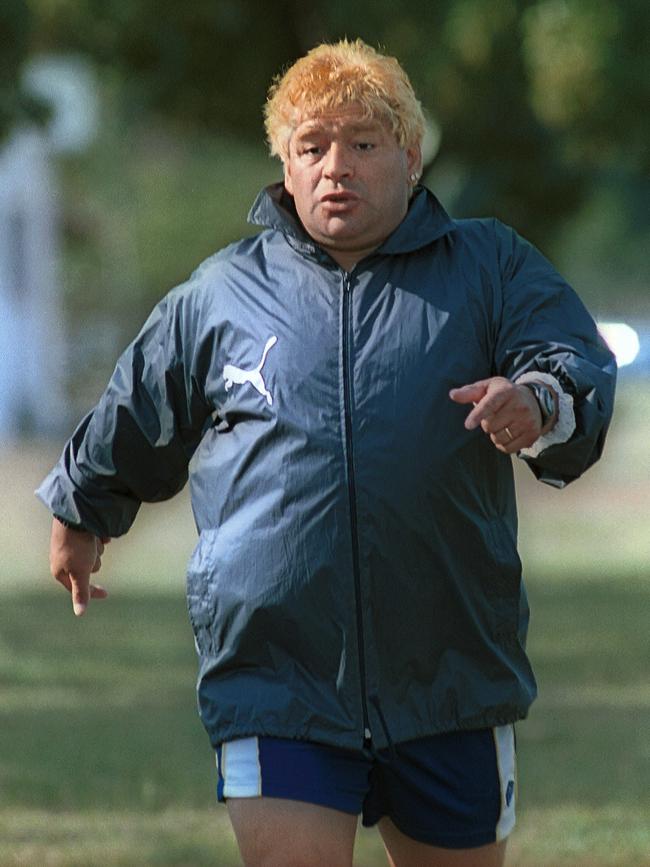
INJURIES
Hepatitis, December 1982: Maradona’s first season at Barcelona was interrupted by the illness which sidelined him for almost four months.
Broken ankle, September 1983: A terrible challenge by Athletic Bilbao defender Andoni Goikoetxea, nicknamed the Butcher of Bilbao, put Maradona out of action for three months. Goikoetxea has the boots he wore during that match in a glass display at his home. Maradona experienced pain in the ankle for the rest of his career and wore different sized boots on either foot to compensate.
Bruised toe, June 1990: Maradona’s 1990 World Cup campaign was blighted by a damaged big toe of his left foot which also had carried a severe blister. Maradona’s teammate Julio Olarticoechea said he was injected with painkillers before every game.
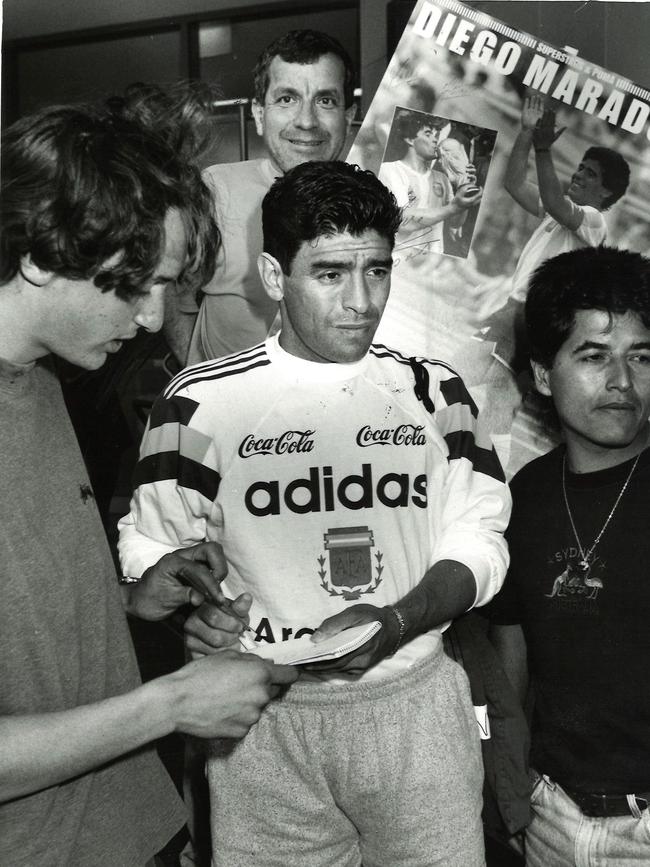
BANS
1991: Tests positive for cocaine and is banned for 15 months.
1994: After playing and scoring against Greece at the World Cup, he tests positive for the banned stimulant ephedrine and is sent home.
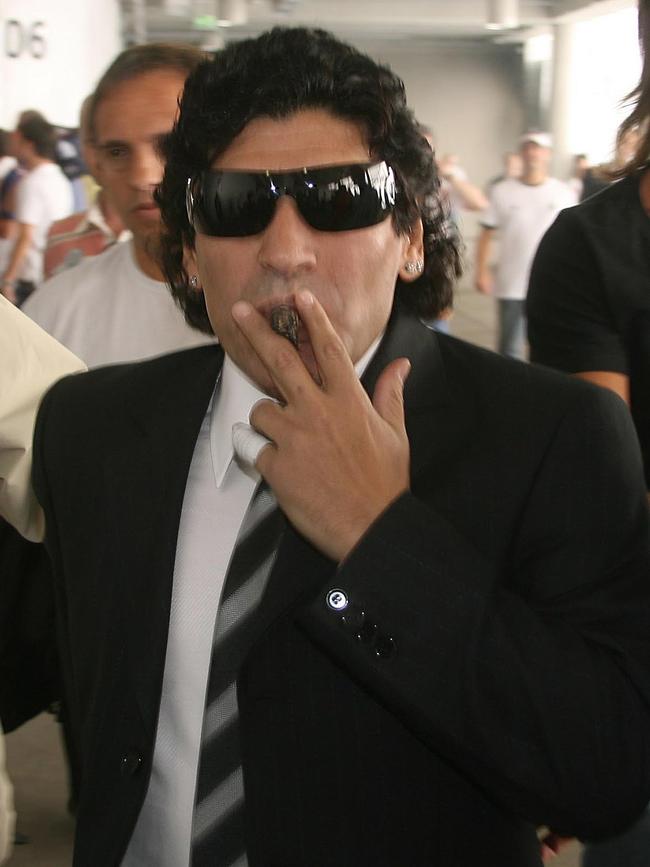
DIET
Throughout his playing days, Maradona usually weighed in at around 11.5st (73kg). In 2005, eight years after retiring, he was undergoing surgery to have his stomach stapled as part of a gastric bypass after almost doubling his weight. His diet had consisted of little more than steak, pizza, pasta and cakes, but the cocktails of drugs Maradona had been taking had also contributed to his ballooning weight. After the surgery, he was on a liquid diet for three months and then mainly ate soup, mashed potato and chicken.
TRAINING
Maradona preferred the skills side of training than the fitness. “He didn’t like to run – he liked to play, to compete,” Pepe Prieto, his former teammate at Sevilla, once said. The tricks would include juggling the ball high in the air with his feet, shoulders and head without letting the ball drop.
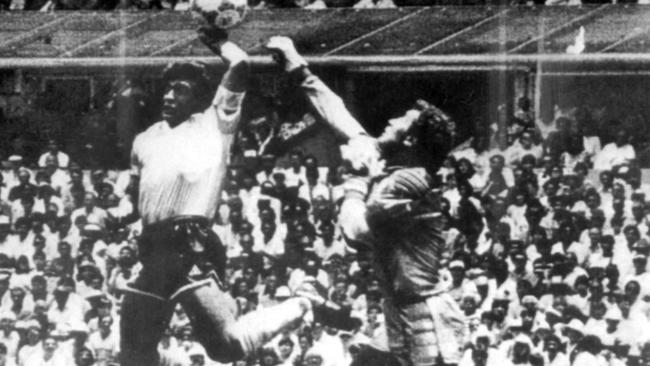
FAMILY
Maradona married Claudia Villafane in Buenos Aires in 1984 and they were together for 20 years before divorcing in 2004. Together, they had two daughters, Dalma and Gianinna, who was married to Manchester City striker Sergio Aguero.
Maradona has six other children, three of which are from Cuba who he acknowledged last year. He had already admitted to being the father of Diego Junior, 33, and Jana, 23, after court battles with their mothers. He also has a seven-year-old son Diego Fernando from his relationship with Veronica Ojeda.

POLITICS
On his famous left leg, Maradona had a tattoo of the late Cuban leader Fidel Castro who he referred to as a “second father”. Maradona developed bonds with southern America’s prominent and controversial left-wing leaders, such as Castro, Hugo Chavez of Venezuela and Evo Morales of Bolivia.
His bond with Castro was strengthened when Maradona spent four years in Cuba recovering from his drug addiction. He also had a tattoo of Argentine-born revolutionary Che Guevara on his arm.

On a visit to the Vatican to meet Pope John Paul II, Maradona openly criticised a lack of focus on the cause of poor people. “I went in and saw the golden ceiling. And I thought to myself: how can [he] … live with a golden ceiling and then go to poor countries and kiss the boys with the belly like that. I stopped believing, because I was seeing,” Maradona wrote in his autobiography.
In 2005, Maradona wore a “Stop Bush” t-shirt to a rally against the former US president George W Bush in response to the Iraq war. “I’m proud as an Argentine to repudiate the presence of this human trash, George Bush,” Maradona said. Three years later, he said he was a fan of Barack Obama and had great expectations for his presidency.
The Times


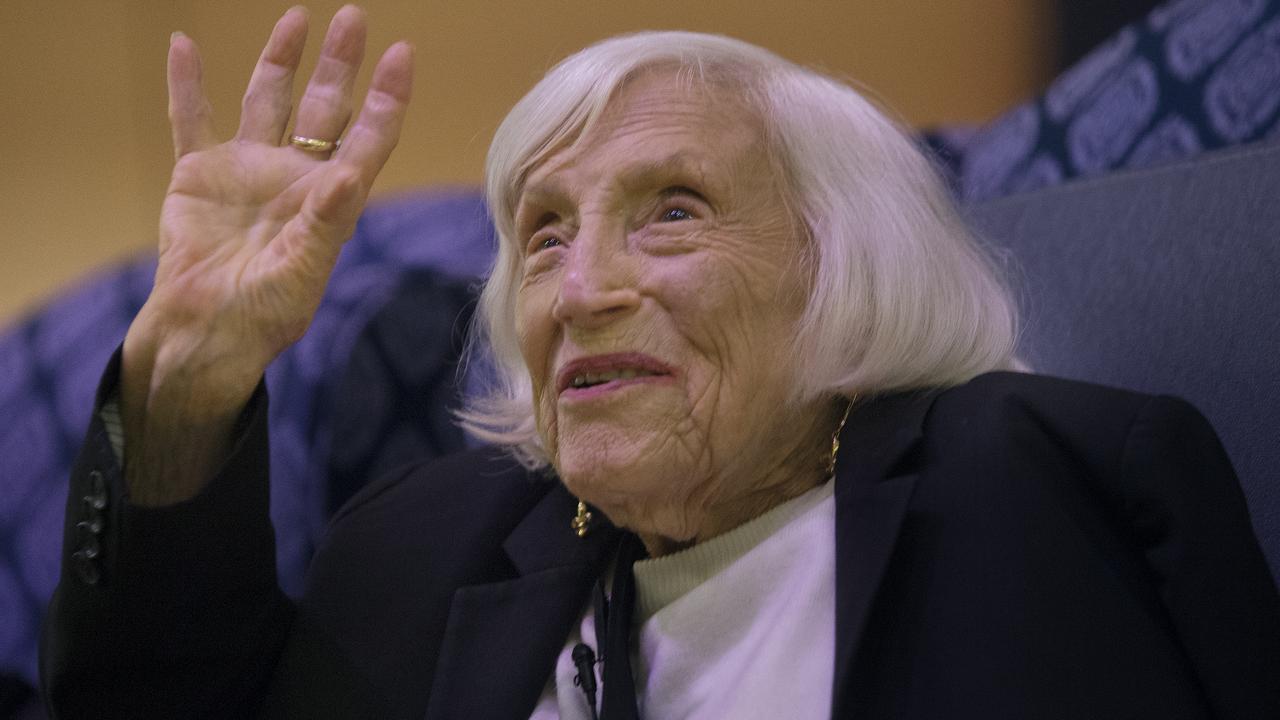
To join the conversation, please log in. Don't have an account? Register
Join the conversation, you are commenting as Logout